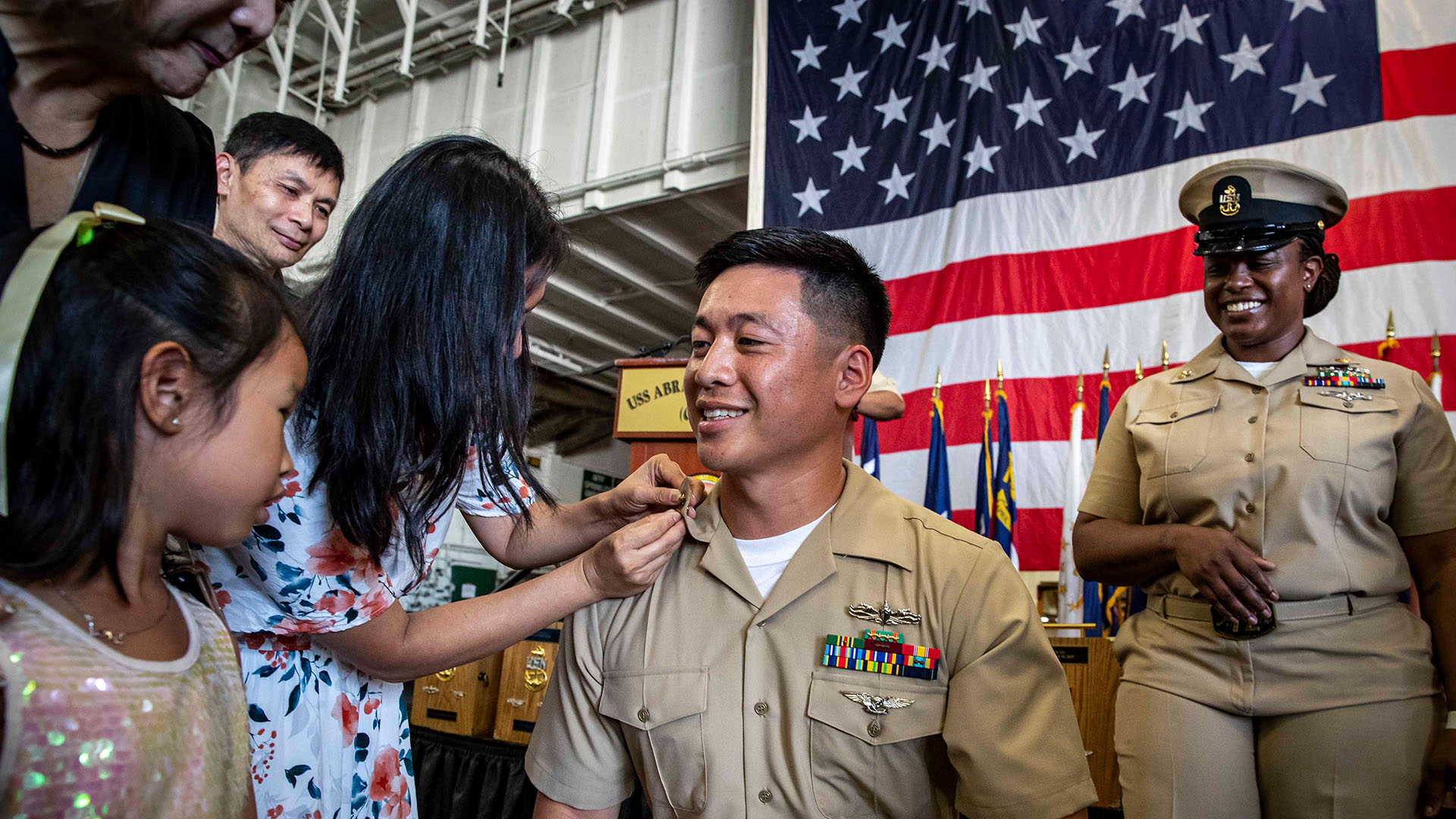The stripes and bars on a military uniform signify rank. If you’re new to the military, you know enough to understand that rank matters.
While it may take time to figure out what everything means, a working knowledge can help you feel more at home in the military.
A quick vocabulary lesson
Here are some terms you’ll need to know:
- Rank: Think of rank as the military’s organizational structure.
- Insignia: Insignia on service members’ uniforms can represent rank, rate or designator. It may include various emblems such as chevrons, bars, oak leaves or stars. Typically, service members wear insignia on the shoulder or collar of their uniform, but stripes on a uniform sleeve often represents years of service.
- Pay grade: Military members of the same pay grade are paid the same amount in each branch of service. The service branches represent pay grades by a letter and a number, so an officer at the first pay grade is an O-1; an enlisted member at the fourth pay grade is an E-4.
Who wears what and why
Here’s a breakdown of the insignia:
- Chevrons: Most enlisted personnel in every military service branch wear chevrons, or V-shaped stripes.
- Bars: Officers in the lower pay grades wear bars. Officers at the O-1 pay grade wear one gold bar, O-2 wear one silver bar, O-3 wear two silver bars and warrant officers wear striped bars.
- Oak leaves: Officers at the O-4 pay grade wear a gold oak leaf, and officers at the O-5 pay grade wear a silver oak leaf.
- Eagles: Officers at the O-6 pay grade wear a silver eagle.
- Stars: Officers at the O-7 through O-10 pay grades wear one, two, three or four stars, respectively.
To see what these insignia look like for each rank in your service branch and to learn the names of each rank, go to the Defense Department’s display of officer and enlisted insignia.
Rank categories
There are four hierarchical categories:
- Junior enlisted personnel: This refers to service members at the entry pay grades. Each service branch has a different name for their junior enlisted personnel. Service branches also vary the level at which service members are no longer considered junior enlisted personnel. For instance, the Army and Marine Corps call an E-1 a private, the Air Force an airman basic, and in the Navy an E-1 is a seaman recruit. As entry-level members gain time and experience, they assume more responsibilities. For example, an E-4 in the Army can be a corporal or a specialist, and although they are both paid the same, a corporal is expected to assume leadership responsibilities and has a higher rank than a specialist.
- Non-commissioned officers: Non-commissioned officers include enlisted service members in pay grades E-5 through E-9.
- Warrant officers: Service members in pay grades W-1 through W-5 are warrant officers.
- Commissioned officers: Military commissioned officers hold the highest military ranks in the pay grades of O-1 through O-10.
How to greet each rank
Here’s a quick cheat sheet for how to address each rank in person:
- Commissioned officers (Army, Marine Corps and Air Force): rank (General, Colonel, Captain, Lieutenant,) and last name
- Commissioned officers (Navy): rank (Admiral, Captain, Commander, Lieutenant) and last name
- Warrant officers: Warrant Officer and their last name or Mr./Ms. and last name
It gets a little trickier with enlisted soldiers and noncommissioned officers:
Army and Marine Corps:
- Privates (E1 and E2) and privates first class (E3): Private and last name
- Specialists: Specialist and last name
- Sergeants, staff sergeants, sergeants first class and master sergeants: Sergeant and last name
- First sergeants: First Sergeant and last name
- Sergeants major: Sergeant Major and last name
Navy:
- Seaman recruit, seaman apprentice (E1 and E2) and seaman (E3): Seaman and last name
- Petty officer third class/second class/first class: Petty Officer and last name
- Chief petty officer: Chief and last name
- Senior chief petty officer: Senior Chief and last name
- Master chief petty officer: Master Chief and last name
Air Force:
- Airman (E-1/2), airman first class (E-3), senior airman: Airman and last name
- Technical sergeant, master sergeant, senior master sergeant: Sergeant and last name
- Chief master sergeant: Chief Master Sergeant and last name
- Command chief master sergeant: Command Chief Master Sergeant and last name
Space Force:
- Specialist: Specialist and last name
- Sergeant: Sergeant and last name
- Technical sergeant: Technical Sergeant and last name
- Master sergeant: Master Sergeant and last name
- Senior master sergeant: Senior Master Sergeant and last name
- Chief master sergeant: Chief Master Sergeant and last name










